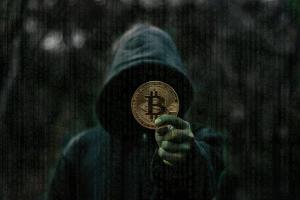WASHINGTON, DC, UNITED STATES, May 31, 2021 /EINPresswire.com/ -- When the first cryptocurrency, Bitcoin, was introduced back in 2009, it didn’t immediately gain traction. In the last decade, Bitcoin has gained more attention, and more people are investing in it. Recently, events such as Elon Musk invested $1.5 billion into Bitcoin, which led to a price surge and a high of over $63,000 in April 2021 and then drop almost $30,000.
While we can not offer protection against trading volatility, we can advise on good practices, to help keep your Bitcoin safe from hackers. As much as Bitcoin has been lauded to be unhackable, there are some risks involved. It possible for an individual or a digital currency exchange’s funds to disappear.
Some of these risks with Bitcoin and other cryptocurrencies include:
Crypto-phishing
Crypto-phishing happens when a bogus website dupes you into thinking it is a legit one. The site dupes you into giving up your login and the private key details. These details are then used to wipe your Bitcoin wallet clean.
Spoofing
Some malicious actors pretend they are legitimate businessmen. They get you to pay for a service or product and do not deliver the goods or services.
Crypto-ransomware
Crypto-ransomware is malicious software used by malicious actors to extort Bitcoin from investors. They take your crypto-wallet or devices hostage via encryption and demand payment for a decryption key.
Crypto-jacking
Crypto-jacking uses other people’s devices to mine for Bitcoin. This attack comes veiled as an email link or attachment. Once the link is clicked on or the attachment downloaded, the crypto-mining code is launched and embeds into the victim’s mobile or computer. This code works covertly, and it is almost impossible to detect it’s there.
Jonathan Assis, the Asset Recovery Expert of CNC Intelligence Inc., says that “Most times, you will never guess you have been crypto-jacked. Ensure you keep your anti-virus software, browser, and operating software updated. Most importantly, never download or authorize any permissions to unknown or unsolicited programs or files and never click on links in emails or messages from any unknown senders.”
How to Protect Your Investment
Use Physical Wallets
The use of physical, aka hard wallet or cold storage, is one of the best ways to protect your investment. This cold storage is an offline crypto-wallet that you can use to keep your Bitcoin safe. These hard wallets resemble a USB drive and are used as a physical store for coins and tokens. Each hard wallet has a private key that allows you access to your wallet.
Protect the Private Key
These wallets are effective against digital theft, but the risk of losing the key is also another risk. That would mean you might lose all your investments. It would be best if you protect your private key by splitting it into two and storing them separately in secure locations.
Back-Ups
Always backup your crypto wallet. If your computer or device crashes, the only way you can recover your coins is the regular backups of your wallet. Ensure you back up your wallet.dat files, then store them in a secure location that is not connected to the internet, such as on a CD, USB, or hard drive. Ensure the backup has secure passwords.
Use Multi-signature Addresses
The multi-signature approach involves using several people to approve a transaction. None of the other people can withdraw Bitcoin without the other people’s consent. This keeps your Bitcoin safe as none of the signatories can withdraw without your knowledge.
Trading Bitcoin is fast becoming a lucrative industry, and digital thieves keep advancing their tactics. As much as Bitcoin is supposed to be safe, it is not strange to hear people whose investments have gone up in a cloud of smoke, never to be seen again. Be cautious in all your transactions and secure your wallet to protect your Bitcoin.
Elliot Taylor
CNC Intelligence Inc.
+1 202-773-4704
email us here
Visit us on social media:
Facebook
LinkedIn

